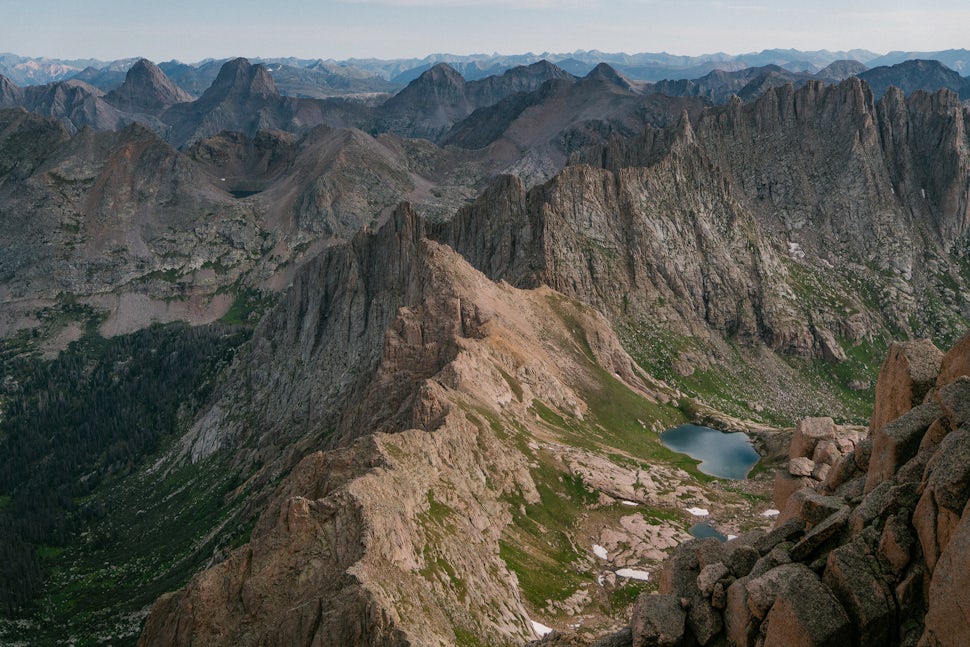Colorado's San Juan National Forest is closing to ALL access. Here's what you need to know.
Due to continuing increased fire danger, the Forest Service has made the decision to close the San Juan Forest to the public.

Over the weekend the "416" fire burning outside of Durango more than doubled in size, to 17,000 acres. Over 2,000 homes have been evacuated, and the fire is only around 10% containment. It's the first large fire of what is shaping up to be a terrible fire season in Colorado. Statewide snowpack was at only 24% of average at the start of June, with southern Colorado bearing the brunt of a poor snow year.
Due to the ongoing fire and continuing high fire danger, the entire San Juan Forest area will be closed to the public starting tomorrow, June 12, 2018. Although the order says it will remain in effect until "the forest receives sufficient moisture to improve conditions", this means most of Southern Colorado will likely be closed for the remainder of the summer.
Popular areas this will affect
Highly trafficked 14ers, like the Chicago Basin area (Eolus, North Eolus, Sunlight, Windom), Mount Wilson and El Diente (and possibly Wilson Peak) will all be closed. Other areas accessed by the Silverton-Durango train including the Grenadier Range will also be inaccessible. The extremely popular Ice Lakes Basin and Island Lake are a no-go. Please consult with a local ranger station if you aren't sure if your destination is in the closure area.
Below is the entire news release from the Forest Service:
------------------
DURANGO, CO –The San Juan National Forest (SJNF) is planning to implement Forest-wide Stage 3 fire closure this week, which will prohibit most entry into the forest. The purpose of the closure is to protect natural resources and public safety due to the danger of wildland fire. Fire danger on the SJNF remains very high due to exceptional drought and fuel conditions. The closure order is expected to be signed Tuesday, June 12, 2018 and remain in effect until the forest receives sufficient moisture to improve conditions.
The closure order will prohibit entry into the San Juan National Forest, including entry by the general public, most administrative entry by Forest Service employees, and most uses authorized under Forest Service permits and contracts. This means that forest campgrounds, day use areas, roads, and trails will be closed, including wilderness areas, and that hiking, dispersed camping, and other recreational activities are prohibited. Exemptions might be granted on a case-by-case basis with a written authorization from the Forest Service, which would include specific requirements for fire prevention. Exemptions must be requested from the appropriate District Ranger (below). Federal, state, or local officers conducting specific duties are exempt. The McPhee Recreation Area Complex boat ramp and marina will likely remain open but no shoreline use will be allowed.
The SJNF covers 1.8 million acres within the Dolores Ranger District, the Columbine Ranger District, and the Pagosa Ranger District across nine counties in southwestern Colorado. County and state roads and U.S. highways that cross Forest Service lands will not be affected by this order. On-going road closures due to the 416 Fire will continue to be managed by the La Plata County Sherriff. Businesses in local communities will remain open for business during the Forest closure at their discretion.
San Juan National Forest Supervisor, Kara Chadwick, wants concerned citizens to know that instituting a forest closure is an extremely difficult decision, and she is aware that the closure will affect a great many people, businesses, partner agencies, forest management activities, and the public. Forest managers use several criteria to determine when to implement restrictions and closures, including fuel moistures, current and predicted weather, values at risk from wildfire, fire activity levels, and available firefighting resources. The SJNF implemented Stage 1 fire restrictions on May 1, then Stage 2 fire restrictions on June 1, but conditions continued to worsen. “The indices our fire team uses to predict fire danger are at historic levels well before we can expect any significant moisture from the seasonal monsoons,” SJNF Forest Fire Staff Officer, Richard Bustamante said. “Under current conditions, one abandoned campfire or spark could cause a catastrophic wildfire, and we are not willing to take that chance with the natural and cultural resources under our protection and care, or with human life and property.”
Violating Stage 3 fire restrictions or going into a closed area carries a mandatory appearance in federal court, and is punishable by a fine of up to $5,000 for an individual or $10,000 for an organization, or imprisonment of up to six months, or both.
We want to acknowledge and thank the past, present, and future generations of all Native Nations and Indigenous Peoples whose ancestral lands we travel, explore, and play on. Always practice Leave No Trace ethics on your adventures and follow local regulations. Please explore responsibly!
Do you love the outdoors?
Yep, us too. That's why we send you the best local adventures, stories, and expert advice, right to your inbox.








